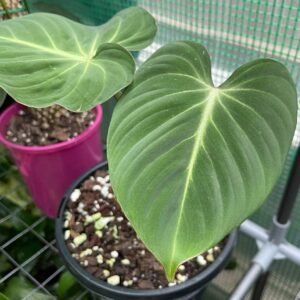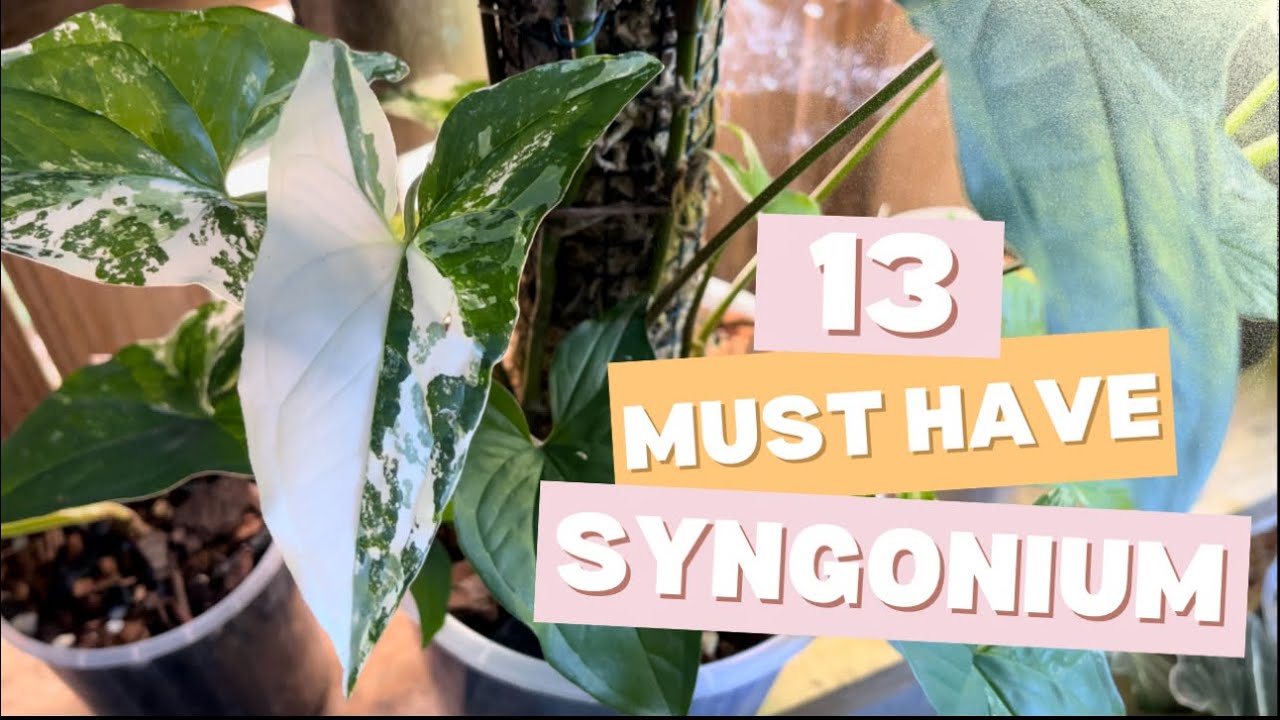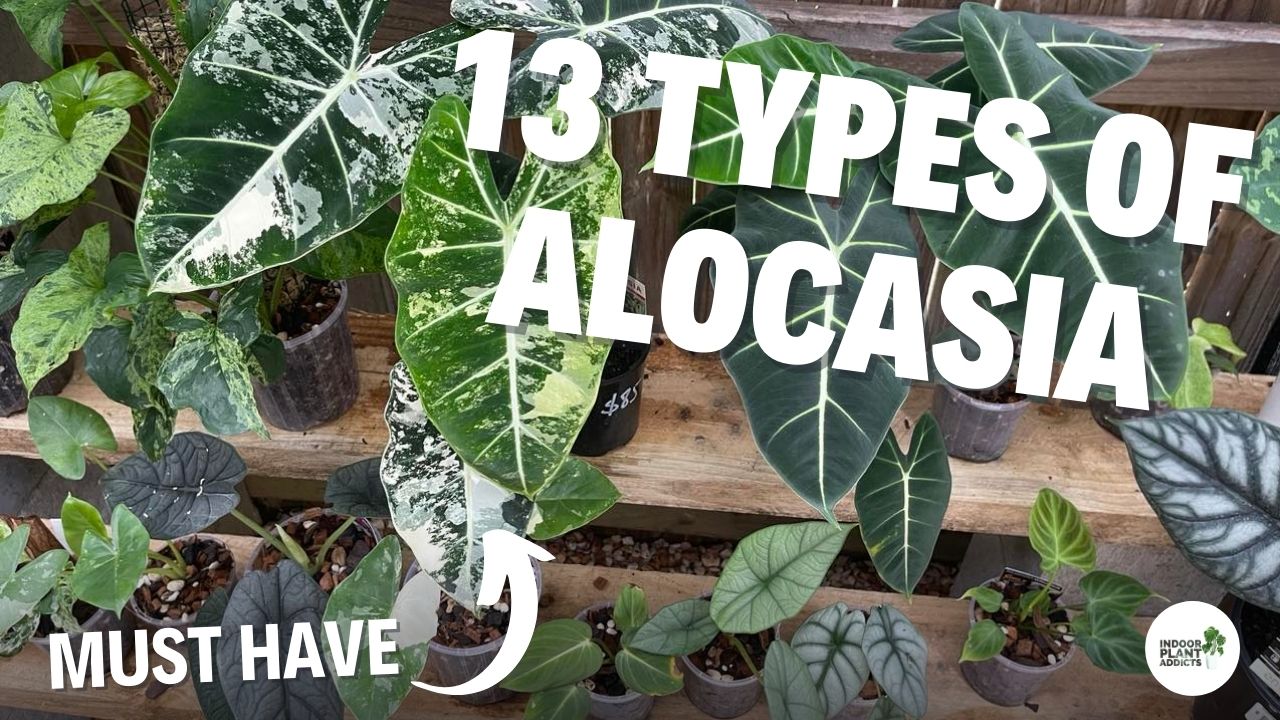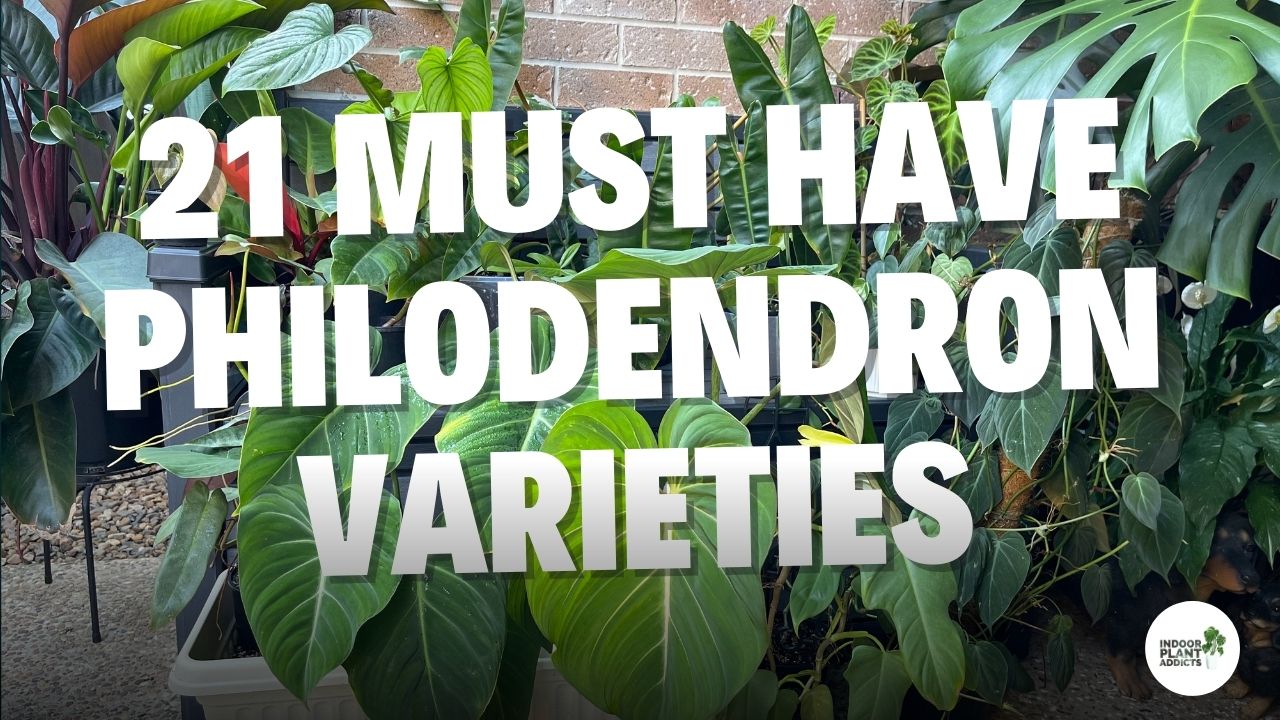Philodendron Gloriosum
If you like crawling plants with stunning large leaves, this plant is for you. Unlike most Philodendron plants, the Philodendron Gloriosum is a crawling plant that trails horizontally along the ground. It has large green, heart shaped foliage with white veins and is velvety to touch. This amazing plant is part of the Araceae family that is native to Colombia but can also be found in other tropical states as well.

Philodendron Gloriosum Quick Overview
| Leaf Size | 90cm in length |
| Light | Bright indirect |
| Temperature | 65˚F-85˚F (18˚C-29˚C) |
| Humidity | 60%-80% |
| Cost | $$ |
| Care Level | Medium |
| Toxicity | Toxic |
Size
The mature size of a Philodendron Gloriosum leaf can grow up to 90 centimetres (26 inches) in length. The stem of this plant can grow up to 3 feet (1 metre) in length. This plant is a slow grower and it can take up to a month for a new leaf to fully develop. This plant is known to be a crawler, so using a rectangular pot for the plant to crawl along and root into the soil will help encourage those larger leaves.
Philodendron Gloriosum Light Requirements
Philodendron Gloriosum will grow best when positioned in bright indirect lighting. There has been a bit of a debate about whether a shaded spot or a bright spot provides better growing conditions. In my opinion, I believe this plant grows best in bright indirect light. Brighter lighting encourages the plant to grow fuller foliage, however, too much direct sunlight can cause the leaves to yellow and become dry and crispy.
In the natural environment, Philodendron Gloriosum are shaded by trees and trying to recreate that environment in your home is nearly impossible. This is why providing your plant with bright indirect light will help it to thrive in your home. If your plant isn’t receiving adequate lighting, the plant will become long and leggy with long gaps between the leaves.
If your plant is housed in a spot that receives direct sunlight, adding a blind or curtain to your window will help to defuse the harsh sunlight to avoid burning the plants foliage. Alternatively, if you can’t seem to find that perfect spot in your home, you can always use grow lights. Just like direct sunlight, if your plant is sitting too close to the grow lights, they will burn the foliage. Keeping a safe distance of at least 60cm between your plant and the light will avoid any trouble.
Temperature
The ideal temperature for growing Philodendron Gloriosum is between 65˚F-85˚F (18˚C-29˚C). Like other Philodendron plants, this plant loves warmer temperatures and won’t tolerate cold conditions. The ideal temperature during the night is between 60°F-70°F (16°C–21°C). If the temperature is expected to drop below those numbers, you should move your Philodendron Gloriosum to a warmer spot in your home. During the warmer months, you can move your plant outdoors to enjoy the outside temperature as well as the occasional rainy days.
Humidity
Philodendron Gloriosum will thrive when kept in a high (60%-80%) humidity environment. This plant can tolerate being in humidity around 40%-50%, however, if it drops below 40%, you might have to think about using a humidifier or alternatives to bump up the humidity.
Providing a high humidity for your plant will encourage bigger and healthier growth. Some of the ways you can bump up the humidity without having to use a humidifier are:
- Misting your plants
- Pebble trays
- Grouping plants together
You can read more about increasing humidity in your home here.
Philodendron Gloriosum Watering Requirements
Philodendron Gloriosum likes to be moderately watering. How often you need to water will change throughout the seasons when the temperature and sunlight is changing. This plant likes the soil to be slightly moist but not soggy. You should check the top few inches of soil with your finger to feel if the soil is moist. If the soil is dry, give your plant a drink. It’s important to check your plants before you water to avoid over-watering and root-rot. Drooping leaves can be a sign that your plant needs a drink.
Drooping and yellowing leaves can also be an indicator that you’ve over-watered your plant. Excess water causes the soil to become waterlogged which can cause the roots to start rotting. This doesn’t allow them to take in any water, causing the leaves to droop. This can then cause fungus issues, pest problems and root-rot. Insufficient watering can also cause the leaves of your plant to drop.
Fertilizing requirements
Not only does your plant need sufficient lighting for best growth, it also needs fertilizing. You should fertilise your Philodendron Gloriosum monthly during Spring and Summer. You can reduce fertilising to every 8 weeks during Winter and Autumn. Applying fertiliser when your plants aren’t actively using up the nutrients in the soil can cause salt build up and root burn. Fertilising your plants gives them the essential nutrients they need for promoting and maintaining new and healthy growth.
The best fertiliser to use for Philodendron Gloriosum would be a balanced all purpose fertiliser diluted to half strength. An alternative to a liquid fertiliser is a slow release fertiliser. Slow release fertilisers will release nutrients over months at a time, meaning you won’t need to fertilise as often. If your plant is producing new growth even slower than normal with small leaves, this can be a sign that your plant is lacking the essential nutrients it need to produce healthy growth.
Another thing you need to be cautious of when fertilising houseplants is over-fertilising. Over-fertilizing your plant can cause fertilizer burn and do more harm than good. If you think you’ve over-fertilised your plant, you can either change the soil or rinse the fertiliser out. You will notice a change in the water colour when the fertiliser has been rinsed out.
For more information on fertilising houseplants click here.
Soil Requirements
Philodendron Gloriosum will grow best in a well draining soil that is rich in organic matter. To achieve a good, well-draining soil, you can use orchid bark potting mix with perlite and peat mixed into it to help create better aeration and drainage. Air flow is important in potting soil as it allows the plants roots to breath. Not having enough oxygen to the roots can eventually cause them to start rotting.
Another ingredient people like add to the potting mix to make it that bit better is horticultural charcoal. The charcoal is used to help eliminate toxins and make the soil healthier. It also helps to lower how dense the soil is, which helps to create better airflow. With charcoal purifying the soil, this also prevents many pests and diseases from appearing on the plant.
Philodendron Gloriosum can also be grown in sphagnum moss. If you do decide to grow your plant in sphagnum moss, keeping a high humidity is important for healthy growth. You will also need to fertilize more often as there are no nutrients in the sphagnum that is needed for growth.
Planting
Since Philodendron Gloriosum is a crawling plant, it’s best to use a rectangular pot that is shallow and long instead of a round pot. You also need to ensure that the pot has enough drainage holes for water to drain through because you don’t want this plant to be sitting in water.
Once the plant has reached the end of the pot, it will start to grow over the edge. When this happens, you may notice the new leaves will grow smaller as a result of the roots not being in soil.
When planting your Philodendron Gloriosum, it’s important that you plant the rhizome correctly. You may be thinking what is a rhizome? The rhizome is the part of the stem where the new leaves emerge from.
Unlike climbing plants like the Monstera or Philodendron where the rhizome is growing vertically to climb up a pole, the Gloriosum grows horizontally so it can crawl along the ground. You should keep the rhizome above the soil so that the top is exposed but the roots can grow into the soil.
If the rhizome is buried under the soil, it’s more likely to rot if the soil is kept moist. When the rhizome is no longer touching the soil, the roots are no longer able to grow into the ground meaning if you have this plant growing vertically or it has outgrown its pot, the leaves will become smaller and smaller. Leaving the rhizome partially above the soil will allow the roots to find their way into the soil and you will have a happy, big plant.
Diseases & Pests
Like most other Philodendron varieties, the most common pests you may encounter on your Philodendron Gloriosum are Spider Mites, Aphids, Mealybugs, Scale, Whitefly and Fungus Gnats. The most common disease that you may encounter is Root-rot. For a wide range of information on combating a range of indoor plant pests and diseases click here.
There are a few things you can do that will assist in preventing any pest infestations. The things you can try are:
- Checking new plants for pests or isolating new plants for up to a week.
- Check your plants every few days for pests.
- Trim off any dead or dying leaves.
- Wipe down leaves if you notice them getting dusty.
- Keeping your plants healthy. A healthy plant will be able to handle an infestation better than those that aren’t as happy.
- Isolate any plants that have pests.
Following this will assist in keeping pests away as well as catch them early on before any severe infestations are able to start. Keeping plants healthy and in the correct living environments can help to deter any pests from invading your plants.
Toxicity
The Philodendron Gloriosum is toxic and should be kept away from small children and animals. If any of this plant is ingested it can lead to an irritated throat, problems swallowing, stomach pains and cramps.
Click here for the 5 best plants that are non-toxic and safe for pets.



